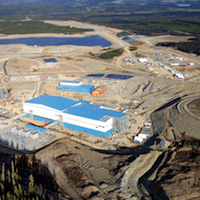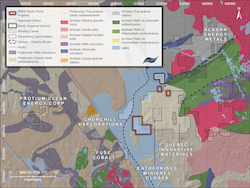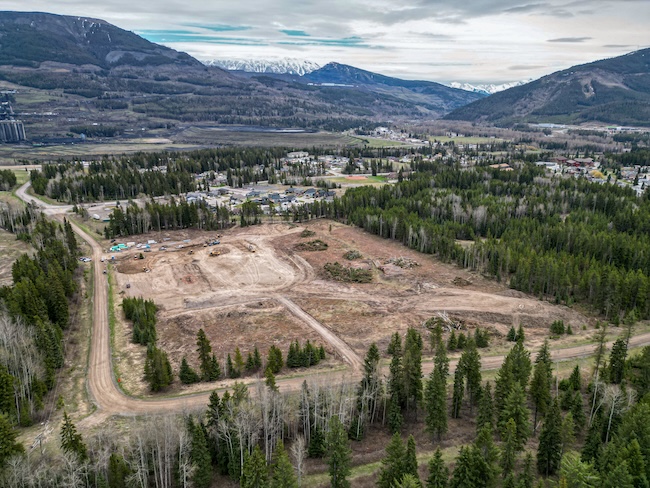Working together to open Mount Milligan

Overview of the compact four-by-three kilometre Mount Milligan Mine site, set to begin production in 2013. — Photo courtesy Thompson Creek Metals In
Overview of the compact four-by-three kilometre Mount Milligan Mine site, set to begin production in 2013. — Photo courtesy Thompson Creek Metals
In a joint venture operation, AMEC Americas Ltd. and Fluor Corporation completed EPCM services for Mount Milligan, B.C.’s first major metals mine in 15 years. The $1.5 billion open-pit copper and gold mine owned by Thompson Creek Metals Company is constructed to meet strict environmental regulations and created employment for several local contractors.
AMEC and Fluor completed the EPCM services for the facility, which included a 60,000 tonnes per day copper flotation process plant, tailings storage facility, ancillary plant facilities, 92 kilometres of electric power transmission lines and a 600-person construction camp in the remote location 150 kilometres northwest of Prince George.
Warner Uhl, project director on the Mount Milligan project, said the company was awarded the contract on June 10, 2010, and had people in the field the next day planning work on the Rainbow Forest Route, which provides access to the site.
“It had to be widened to allow us to bring heavy lifts to the mine site from Prince George,” said Uhl. “The lifts weigh about 105 tonnes, and there were a few bridges that had to be removed and replaced.”
AMEC and Fluor completed the work in strict compliance with environmental recommendations secured during the mine design phase, which solicited community and First Nations recommendations.
“We did it all at a time of year so as to not disturb the fish habitat in nearby streams,” Uhl said. “We had numerous visits by First Nations groups in the area and they were quite happy that construction was not damaging any of the streams in the area.”
The mine’s compact design required a footprint of only four kilometres by three kilometres—a key design component developed to minimize the potential impacts on nearby water bodies and fish habitats. Mine designers used a community consultation process and implemented key recommendations, including the relocation of the tailings storage facility, suggested by local communities and First Nations.
The site is configured so run-off is collected into a tailings management pond that was optimally positioned for environmental friendliness and efficiency, said Uhl.
“All of the water runs into the captured area where it is collected and used for the reprocessing of the plant,” he said. “We spent a lot of time and effort ensuring we are not contaminating the fish-bearing streams surrounding the site.”
AMEC and Fluor constructed a construction camp consisting of 1,075 rooms and, simultaneously, a 92-kilometre transmission line from Kennedy Station to the mine site. Roughly 30 per cent of the people on site were local residents from Prince George, Mackenzie, and McLeod Lake First Nation.
“During our portion of the work we peaked at 1,200 people in the workforce,” said Uhl. “We engaged a number of local contractors and the McLeod Lake Band. We spent a fair amount of time with the contractors, making sure they were prepared from a safety perspective, and as a result we just recently surpassed four million man-hours without a lost time incident.”
The project is expected to create 400 direct, permanent jobs and significant long-term economic benefits for the Prince George and Mackenzie regions. The mine will have a 22-year lifespan, with production expected to begin in the fall of 2013.




